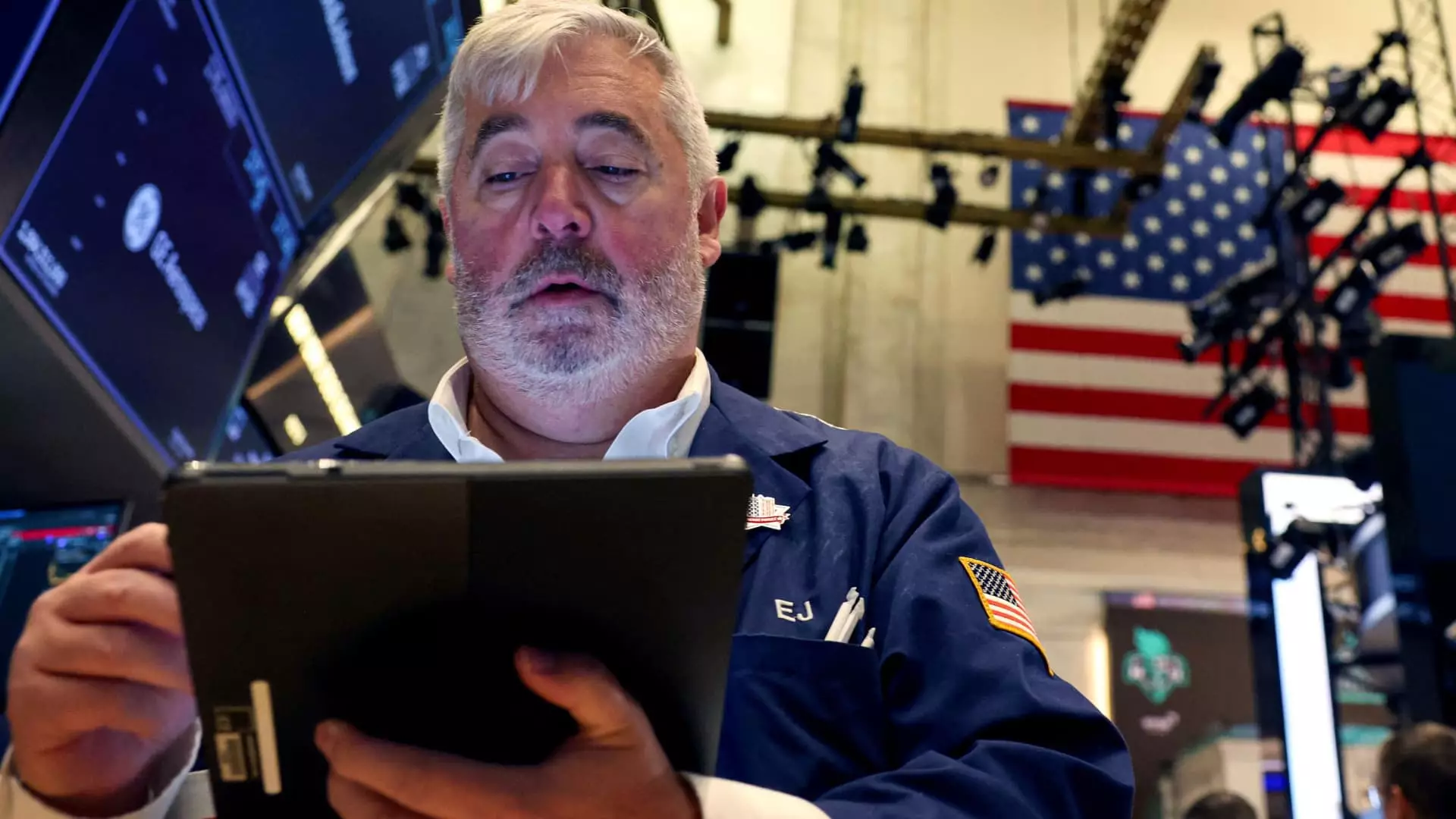As the political landscape in the United States continues to evolve under the looming presidential race, the market’s response showcases a fascinating yet complicated relationship between election outcomes and Treasury yields. The recent spike in Treasury yields amidst the tight contest between Vice President Kamala Harris and former President Donald Trump highlights how the financial markets react to political signals and their implications for fiscal policy.
Overnight trading indicated a significant uptick in Treasury yields, with the 10-year note climbing 14 basis points to reach 4.431%, a level not seen since early July. Meanwhile, yields on the 2-year Treasury also increased, rising 8 basis points to hit 4.285%, the highest since the end of July. These movements illustrate a clear inversion between yields and prices, a typical market behavior where rising yields reflect heightened concerns about future borrowing costs.
Traders seemed to react speculatively to initial election returns, suggesting that Trump was gaining traction in states regarded as critical battlegrounds, such as North Carolina and Georgia. Moreover, projections anticipated that the Republicans might regain control of the U.S. Senate in 2025, adding to the uncertainty that often accompanies electoral contests.
The fluctuations in Treasury yields can largely be attributed to investor sentiment and expectations surrounding potential policy changes. Ahead of the election, Wall Street analysts expressed concerns that a Trump victory could prompt a surge in bond yields, particularly in the case of a Republican sweep across both Congressional chambers and the presidency. The prospect of tax cuts coupled with increased tariffs could mean a wider fiscal deficit, further fuelling inflationary fears.
Notably, finance expert Jeremy Siegel portrayed a sense of caution regarding such outcomes. He observed that the bond market might become “wobbly” if the Republicans were to enact comprehensive fiscal policies, including generous tax provisions. The anticipation of government borrowing to support these initiatives could compel investors to demand higher yields for holding Treasuries.
Interestingly, neither presidential candidate has created a convincing narrative surrounding fiscal discipline throughout their campaigns. This lack of clarity raises alarms that the government might need to increase its debt issuance to support ongoing expenditures. Byron Anderson from Laffer Tengler Investments echoed this sentiment, emphasizing the market’s expectation around a potential Trump victory, which has led to a pronounced sell-off across the yield curve.
As the political race unfolds, analysts have posited differing projections for yields depending on the eventual winner. Stephanie Roth, chief economist at Wolfe Research, indicated that a Trump victory could send yields toward 4.5%, whereas a Harris administration could see them retreat to around 4%. The prospect of a divided Congress, regardless of who sits in the Oval Office, might provide some solace to bond markets, as it would likely constrain each leader’s ability to fully implement their proposed fiscal strategies.
In October, the benchmark 10-year Treasury yield witnessed its most significant monthly increase in over a year, suggesting that broader economic trends and market reactions could be slowly shifting. Additionally, the upcoming Federal Reserve meeting holds considerable importance, as major decisions on interest rates could further influence these trends.
The current environment reveals a complex interplay between political developments and economic output. As investors position themselves for potential outcomes, the focus remains on how these election results will shape long-term fiscal policies and, consequently, the landscape for Treasury yields.
The interplay between presidential races and Treasury yields highlights a multifaceted monetary system influenced by political dynamics and investor emotions. As the scenario continues to evolve, stakeholders must remain vigilant about how these elements will interact in shaping the economic trajectory of the nation. With every twist and turn in the political arena, the financial implications become ever more pronounced, providing a crucial insight into market behavior and economic forecasting.

